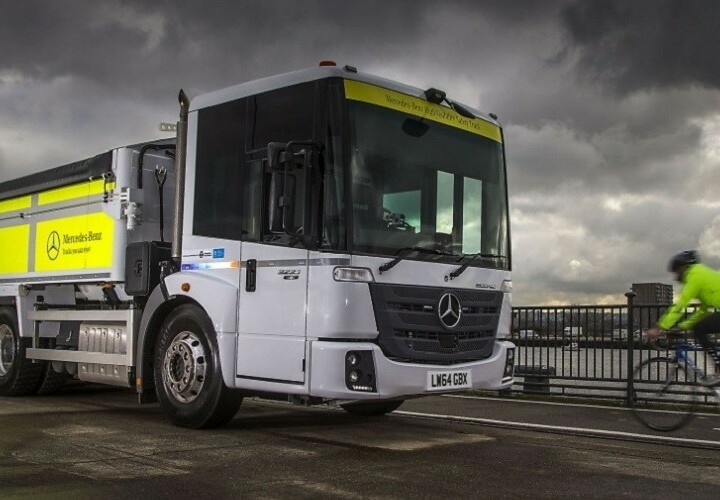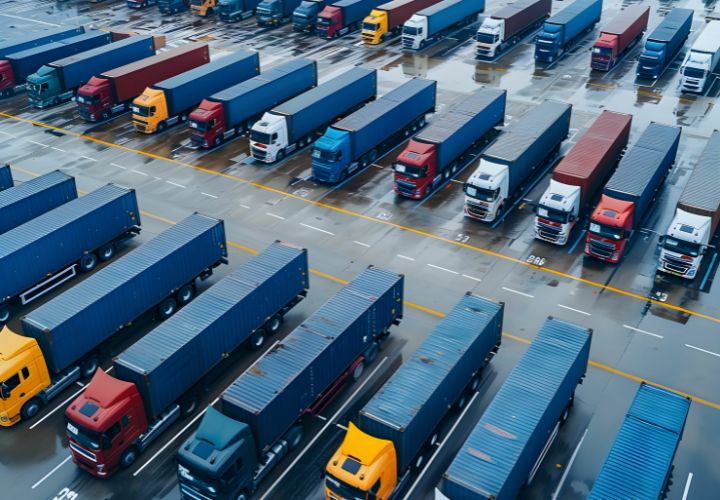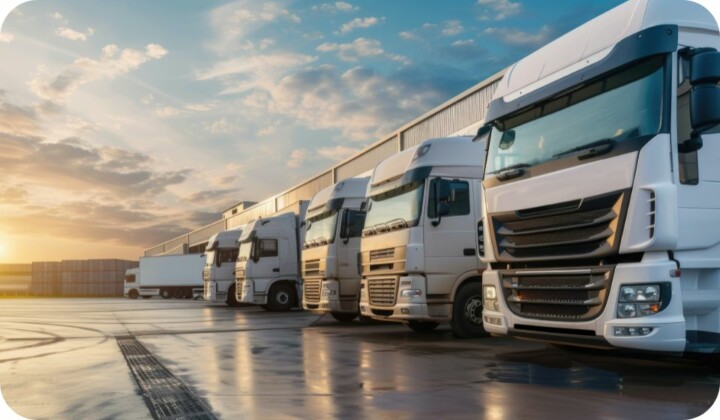Transport for London (TfL) has released initial Euro VI HGV direct vision star ratings, as part of unveiling a draft of its proposed Direct Vision Standard, also known as DVS. In doing so, TfL highlighted that technology will have a key role to play in ensuring safety for road users.
DVS categorises HGVs based on a number of criteria relating to the level of vision the driver has from the cab. By 2024, only vehicles achieving three or more stars (out of five) will be allowed to operate in the capital.
Furthermore, should DVS get the green light, all HGVs over 12 tonnes will need to hold a safety permit to enter London from 2020 onwards.
To view the preliminary truck ratings, TfL have made a dedicated website available, which can be accessed at safertrucks.org.uk.
DVS includes allowances for the use of technology systems, such as vehicle mounted cameras and sensors. A point the Freight Transport Association (FTA) focused on in their response, highlighting the role that technology has in ensuring safety whilst seeking greater clarity on the proposals as soon as possible.
Natalie Chapman, the FTA’s Head of Policy for London, commented:
“FTA has always argued that, in the long term, the really significant road safety improvements we want will be delivered through technology and we are glad that this point, which we have made repeatedly to the Mayor and TfL, is now being listened to. However, to ensure that the capital’s businesses are able to plan and function effectively, it is imperative we have clarity as soon as possible about what the final DVS scheme is going to require.”
The Road Haulage Association also responded, highlighting concern for operators in meeting the standards, with Chief Executive Richard Burnett saying:
“It is positive that we now have an opportunity to work with TfL and the industry to find an effective solution to improve road safety in a balanced way, and to have recognition that the issue is complex and will require a lot more work to ensure that the best possible road safety benefits are obtained.
“The proposal for Direct Vision Standards may be part of the road safety mix; however it is unlikely to be the panacea to the road safety challenges faced by London.
“TfL have not been clear about what impact the proposal will have on road safety as the focus has been on the engineering standards and visibility from the cab in isolation from other factors.”
The Role of Technology
Whilst truck design is the focus of the Driver Vision Standard, TfL has highlighted that technology systems will play a role in determining the safety rating of vehicles. Examples of such technology include:
Vehicle Cameras – vehicles can be fitted with multiple cameras, capturing views to the front, rear and sides. These cameras can be used to review any incident or near miss, helping to understand fault, resolving insurance claims and aiding driver training.
Incident Data Recorder – working with or independently of cameras, the Microlise Safety Module features an Incident Data Recorder, which in the event of an incident records and transmits detailed information about what was happening before, during and after an incident.
Driver Performance – telematics systems have a role to play in ensuring drivers are operating at a high standard. Drivers can be empowered with mobile apps which make performance data available, helping them to identify and correct driver style faults. Transport management can also identify areas for improvement for individual or groups of drivers.
Telematics can also support the near real-time monitoring of driving style, highlighting drivers who may unexpectedly be performing poorly. Action can then be taken to contact the driver to highlight any issues or check drivers are not experiencing medical or personal problems that could impact performance.
Contextual Speeding – monitoring speeding against posted road speeds highlights when individuals are driving excessively fast. With this knowledge, proactive action can be taken to address the issue, ensuring drivers are adhering to speed limits – which are there for safety reasons.
Geofencing – geofences are an underused tool when it comes to safety, but they allow fleet operators to ensure certain vehicles only enter into areas at certain times, or not at all. Likewise, fleet operators can be alerted when vehicles do enter an area, which means steps can be taken to highlight safety issues or contact a driver if a vehicle is not where it should be.
Vehicle Specific Navigation – safety is often compromised when vehicles use roads that are unsuitable, or especially dangerous. With vehicle specific navigation, operators can ensure their vehicles avoid restricted roads, or routes they simply know are more dangerous for that type of vehicle.
Vehicle Health Monitoring & Vehicle Walkaround Checks – ensuring vehicles are in good working order is key and operators run a huge risk of legal action being brought against them if vehicles are involved in incidents, or stopped for inspection, and avoidable faults are found that should have been picked up. Technology has a role to play, reporting fault codes back to the transport office and engineering teams, to ensure any maintenance issues are dealt with quickly.
Further to vehicle health monitoring, vehicle walkaround checks are an essential element of any good maintenance programme. By recording vehicle checks digitally, through a tablet or mobile app, operators can keep records of such checks, but also alert the relevant personnel to any identified problems or defects.
Watch the Safer Trucks Video





